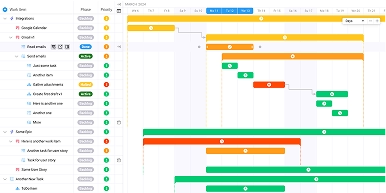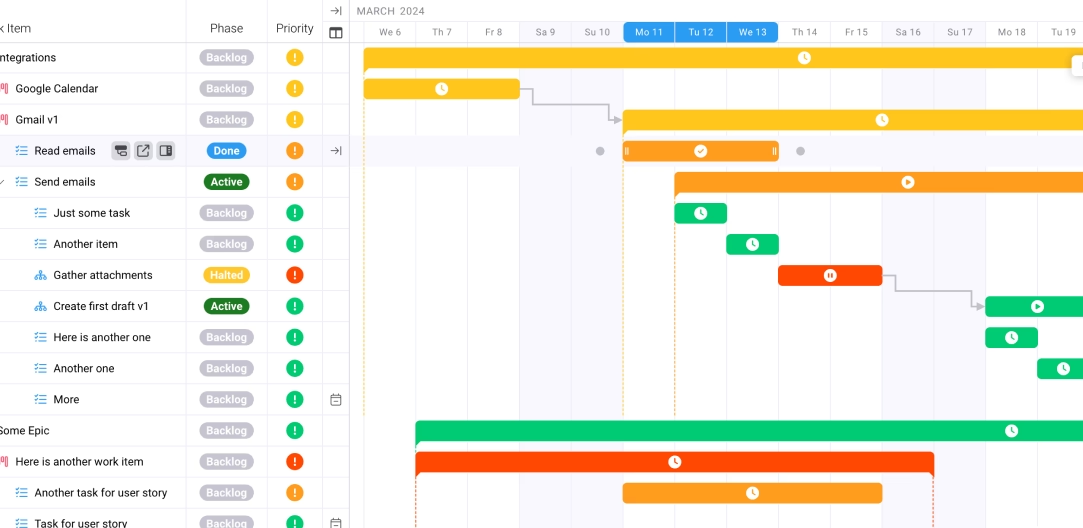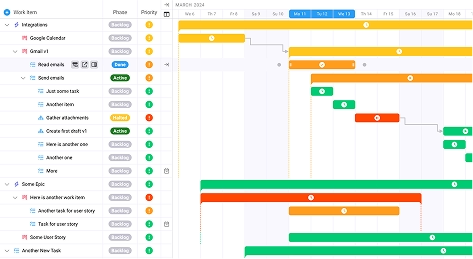
Starting an Agency from Scratch: Your 7-Step Plan for Sustainable Growth
Key takeaways:
Most marketing agencies cite new business sales as their biggest challenge at 69.6%, yet thousands of professionals launch successful agencies every year. The difference between those who thrive and those who struggle isn't luck—it's having a clear roadmap for starting an agency from scratch.
90% of startups fail, with 10% closing within their first year. But here's the truth that should give you confidence: agencies that follow a strategic launch process dramatically improve their odds. First-time founders have an 18% success rate when launching a startup, which means informed preparation makes all the difference.
Starting an agency requires more than expertise in your field. You need a systematic approach that addresses everything from legal structure to client acquisition. This guide provides a proven 7-step plan for building a sustainable agency that generates revenue, serves clients effectively, and positions you for long-term growth.
The Current Challenge: Why Most Agencies Struggle in Year One
The agency landscape has become increasingly competitive. The number of digital agencies in the U.S. grew by 54% between 2018 and 2023, creating a saturated market where differentiation is crucial. New agency owners often face three critical mistakes:
Undercapitalization. 64% of small businesses report starting with $10,000 or less, which rarely provides enough runway for sustainable growth. Agencies need capital for technology, marketing, and operational expenses before revenue stabilizes.
Lack of specialization. Generalist agencies compete primarily on price, making profitability difficult. The most successful new agencies identify a specific niche or industry vertical from day one.
Operational chaos. Without systems for project management, client communication, and financial tracking, agencies quickly become overwhelmed as client numbers grow.
The solution? A strategic framework that addresses each of these challenges systematically.
Step 1: Define Your Agency's Foundation and Business Structure
Before you sign your first client, you need a solid legal and operational foundation. This isn't just paperwork—it's the framework that will protect your personal assets and optimize your tax situation.
Choose the Right Business Structure
LLCs protect owners from personal liability while allowing pass-through taxation, making them the most popular choice for new agencies. Your business structure affects everything from taxes to personal liability to your ability to raise capital.
For most new agencies under $100K in revenue: Start with an LLC. It's simple to set up, provides liability protection, and offers tax flexibility. You'll file a certificate of formation with your state and create an operating agreement defining ownership structure.
For agencies projected to exceed $100K quickly: Agencies bringing in at least $100,000 in revenue should consider S-Corp status for tax savings. This allows you to split income between salary and distributions, reducing self-employment taxes significantly.
Establish Your Agency's Core Identity
Define these elements before launch:
Service offerings. Be specific about what you do and don't do. "Digital marketing" is too broad. "SEO and content marketing for SaaS companies" gives you focus and credibility.
Positioning statement. Articulate exactly why clients should choose you. What makes your approach different? What results can you deliver that others can't?
Pricing model. 65% of digital agencies have set their hourly charging rate between $150 to $224. Decide whether you'll charge hourly, project-based, retainer, or value-based fees.
Your foundation includes registering your business name, obtaining necessary licenses, setting up a business bank account, and implementing accounting systems. These aren't exciting tasks, but they're essential for starting an agency professionally.
Step 2: Identify Your Ideal Client and Niche
The agencies that grow fastest don't serve everyone—they serve someone specific exceptionally well. 80% of agencies believe that specializing in a specific industry vertical positively impacts client acquisition rates.
Why Specialization Matters
When you niche down, three powerful things happen:
Your marketing becomes more effective. Instead of generic messaging, you speak directly to a specific audience's pain points using their language.
You command premium prices. Specialists charge more than generalists because they deliver better results through deep industry knowledge.
Referrals multiply faster. Satisfied clients in the same industry network together, creating a referral engine.
How to Choose Your Niche
Consider these three factors:
Your experience and expertise. What industries have you worked in? Where do you have the deepest knowledge?
Market demand. Is there sufficient demand in this niche? Are companies actively seeking solutions you can provide?
Competition analysis. Is the niche underserved, or will you be fighting established players? Sometimes a crowded niche signals healthy demand.
Define your ideal client profile: company size, revenue range, growth stage, current challenges, and budget capacity. This profile will guide every business decision from service development to marketing.
Step 3: Build Your Service Offering and Pricing Strategy
Starting an agency means transforming your expertise into packaged, repeatable services. Your service offering needs to be clear, valuable, and profitably priced.
Structure Your Services
Core services (3-5). These are your primary revenue generators. Define exactly what's included, typical timelines, and expected outcomes.
Tiered packages. Offer good, better, best options. This gives clients choice while guiding them toward your preferred engagement model.
Add-on services. Additional offerings that complement your core services and increase average project value.
Develop Your Pricing Strategy
Pricing is one of the most critical decisions when starting an agency. Too low, and you'll struggle to cover costs. Too high, and you won't win clients. Here's how to find the right balance:
Calculate your costs. Determine your fixed costs (software, office, insurance) and variable costs (contractor fees, advertising) per month. Add your desired salary and profit margin.
Research market rates. What are competitors charging? What can your target clients afford? Use this as a benchmark, not a ceiling.
Consider value-based pricing. As you prove results, shift from hourly or project fees toward pricing based on the value you create for clients.
Mastering budgeting and cash flow is essential for marketing agency success, especially in your first year. Build financial models that show exactly how many clients at what price points you need to cover costs and generate profit.
Step 4: Establish Operational Systems and Project Management
Operational chaos kills agencies faster than lack of clients. Before you scale, you need systems that support growth without creating bottlenecks.
Essential Systems to Implement
Project management software. You need a central hub for tracking tasks, deadlines, and project progress. Choose a platform that fits your team size and complexity requirements.
Client portal. Give clients a professional interface for submitting requests, reviewing work, and communicating with your team.
Time tracking. Even if you don't bill hourly, tracking time helps you understand profitability and improve estimates.
Billing and invoicing. Automate your billing process to ensure consistent cash flow. Set up payment terms, late fee policies, and automated reminders.
CRM system. Track leads, manage sales pipeline, and store client communications in one place.
Create Standard Operating Procedures
Document your processes for:
- Client onboarding
- Project kickoff meetings
- Deliverable creation and review
- Client approval workflows
- Project closeout and retrospectives
Effective project management tools and frameworks are critical for agency operations. Start simple and add complexity as you grow. The goal is consistency, not perfection.
Step 5: Develop Your Client Acquisition Strategy
Starting an agency means nothing without clients. You need a systematic approach to filling your pipeline with qualified prospects.
Build a Multi-Channel Acquisition Engine
Referrals and networking. Your first clients will likely come from your existing network. Create a target list of past colleagues, clients, and contacts. Reach out personally with a clear value proposition.
Content marketing and SEO. Demonstrate expertise through valuable content. Blog posts, case studies, and guides attract inbound leads and establish authority.
LinkedIn outreach. If you're targeting B2B clients, LinkedIn is essential. Share insights, engage with prospects' content, and send personalized connection requests.
Strategic partnerships. Identify complementary service providers and create referral arrangements. Web developers can partner with copywriters, SEO specialists with web designers.
Paid advertising. Once you understand your client acquisition cost and lifetime value, paid ads can accelerate growth. Start small and test channels systematically.
15 proven strategies exist for attracting high-value agency clients. The key is consistency. Choose 2-3 channels and execute them well rather than spreading yourself too thin.
Create Compelling Proposals
Your proposals should:
- Demonstrate understanding of the client's specific challenges
- Present a clear solution tied to business outcomes
- Include social proof (testimonials, case studies, results)
- Offer flexible pricing options
- Make next steps crystal clear
Win rates improve dramatically when your proposals speak directly to prospects' pain points rather than listing generic services.
Step 6: Scale Through Strategic Growth
Agencies with client success teams report an 89% increase in retention. Growth isn't just about winning new clients—it's about keeping them and expanding relationships.
Focus on Client Retention
Acquiring new clients costs 5-7 times more than retaining existing ones. Build retention through:
Consistent communication. Weekly or biweekly check-ins keep clients informed and engaged. Don't wait for problems to communicate.
Proactive recommendations. Suggest improvements and opportunities before clients ask. This demonstrates you're thinking about their business, not just completing tasks.
Results reporting. Show clear ROI with regular performance reports. Tie your work to business metrics that matter to clients.
Account expansion. Look for opportunities to provide additional services. If you're handling content, could you also manage their social media?
Build Your Team Strategically
You can't scale alone. As revenue stabilizes, consider:
Contractors first, employees later. Contractors provide flexibility as you test demand and refine processes. Transition to employees once you have consistent revenue.
Hire for gaps. Add team members with skills that complement yours. If you're strong in strategy, hire an executor. If you're creative, hire an operator.
Invest in training. Your team's capabilities determine your service quality. Budget for ongoing professional development.
Proven strategies exist for scaling agency revenue by 10x through systematic growth approaches. The agencies that scale successfully do so by building repeatable systems, not by working harder.
Step 7: Optimize Financial Management and Profitability
Cash flow kills more agencies than lack of clients. Understanding your financial metrics separates sustainable agencies from struggling ones.
Track Critical Metrics
Gross profit margin. Revenue minus direct costs (contractor fees, tools, advertising). Target 50-70% for service businesses.
Net profit margin. After all expenses. Healthy agencies maintain 15-25% net margins.
Client acquisition cost (CAC). Total sales and marketing spend divided by new clients acquired. You need to know this number to scale profitably.
Client lifetime value (LTV). Average revenue per client over their entire relationship. Your LTV should be at least 3x your CAC.
Utilization rate. Percentage of available hours that are billable. Target 60-75% for agencies.
Manage Cash Flow Proactively
Invoice promptly. Send invoices immediately when work is complete or on scheduled retainer dates.
Set payment terms. Net 15 or Net 30, with deposits required for project work. Enforce late fees.
Build reserves. Aim for 3-6 months of operating expenses in your business savings account.
Forecast regularly. Review your pipeline, accounts receivable, and projected expenses monthly. Anticipate cash crunches before they happen.
Starting an agency with strong financial fundamentals positions you for sustainable growth rather than boom-bust cycles.
Conclusion: Your Roadmap for Starting an Agency Successfully
Starting an agency from scratch doesn't have to be overwhelming. By following this 7-step framework—defining your foundation, identifying your niche, building service offerings, establishing systems, developing acquisition strategies, scaling strategically, and optimizing finances—you create a sustainable business model.
The agency landscape is competitive, but there's always room for professionals who combine expertise with strategic thinking. Most marketing agencies cite new business sales as their biggest challenge at 69.6%, which means client acquisition will require focused effort. But with systematic approaches to marketing, sales, and service delivery, you'll build a client base that sustains and grows your agency.
Remember: starting an agency is a marathon, not a sprint. Focus on delivering exceptional results for your first few clients. Build systems that support growth. Maintain healthy finances. Stay specialized and resist the temptation to be everything to everyone.
Your agency's success depends on preparation, execution, and continuous improvement. Use this roadmap as your guide, adapt it to your specific situation, and commit to consistent action. The agencies that thrive aren't necessarily the most talented—they're the most strategic and persistent.
Ready to take the next step? Start with step one: define your agency's foundation and business structure. Then move systematically through each phase. Within 12 months, you can build an agency that generates reliable revenue, serves clients effectively, and positions you for sustainable growth.
Frequently Asked Questions
How much money do I need to start an agency?
Most successful agencies launch with $10,000-$25,000 in startup capital, though some bootstrap with less. Your primary expenses include business registration, website development, initial marketing, software subscriptions, and operating expenses for 3-6 months. The exact amount depends on your service model and whether you'll hire contractors immediately.
Should I start my agency as a sole proprietor or LLC?
For most new agencies, an LLC provides the best combination of liability protection and tax flexibility. It protects your personal assets from business debts and lawsuits while allowing pass-through taxation. Once your revenue exceeds $100,000, consider electing S-Corp status for additional tax advantages.
How do I get my first agency clients?
Your first clients typically come from your existing network. Create a target list of past colleagues, clients, and professional contacts. Reach out with personalized messages explaining your new agency and how you can help them. Offer introductory rates or pilot projects to lower the barrier to entry. Simultaneously, build your online presence through LinkedIn and content marketing to attract inbound leads.
What services should my new agency offer?
Focus on 3-5 core services that align with your expertise and target market needs. Avoid trying to offer everything. Specialization helps you stand out and command premium prices. You can always expand services later as you prove your capabilities and understand client needs better.
How should I price my agency services?
Research competitor pricing and calculate your costs including overhead, desired salary, and profit margin. Most new agencies start with project-based or retainer pricing between $2,000-$10,000 per month depending on scope. As you prove results, transition toward value-based pricing that ties fees to outcomes rather than hours.
When should I hire my first employee?
Wait until you have consistent revenue that can support a full-time salary plus benefits (typically $60,000-$80,000 annually for agency roles). Before hiring employees, use contractors to handle overflow work and test your management systems. Many agencies stay contractor-based until they reach $500,000+ in annual revenue.
How long does it take for a new agency to become profitable?
Most agencies reach profitability within 6-12 months if they launch with adequate capital, focus on client acquisition, and manage expenses carefully. The timeline depends on your niche, pricing, sales ability, and operational efficiency. Plan for 12-18 months to establish stable, sustainable profitability.









